The tinder fungus, scientifically known as Fomes fomentarius, is a common species of fungus found across Europe, Asia, Africa, and North America. This mushroom species is known for its distinctive, hoof-shaped fruit bodies that can vary in color from silvery gray to almost black, though they often appear brown. It has a long history of being used as a fire starter and, even in making clothes!
The tinder fungus grows predominantly on the side of various tree species, infecting them through broken bark and causing rot. Interestingly, the tinder fungus continues to reside on trees long after they have died, transitioning from a parasite to a decomposer in its lifespan.
- Scientific Name: Fomes fomentarius
- Common Names: Tinder fungus, tinder polypore, tinder conk, Amadou, hoof fungus, and Iceman fungus.
- Habitat: On hardwood trees in northern regions
- Edibility: Not edible
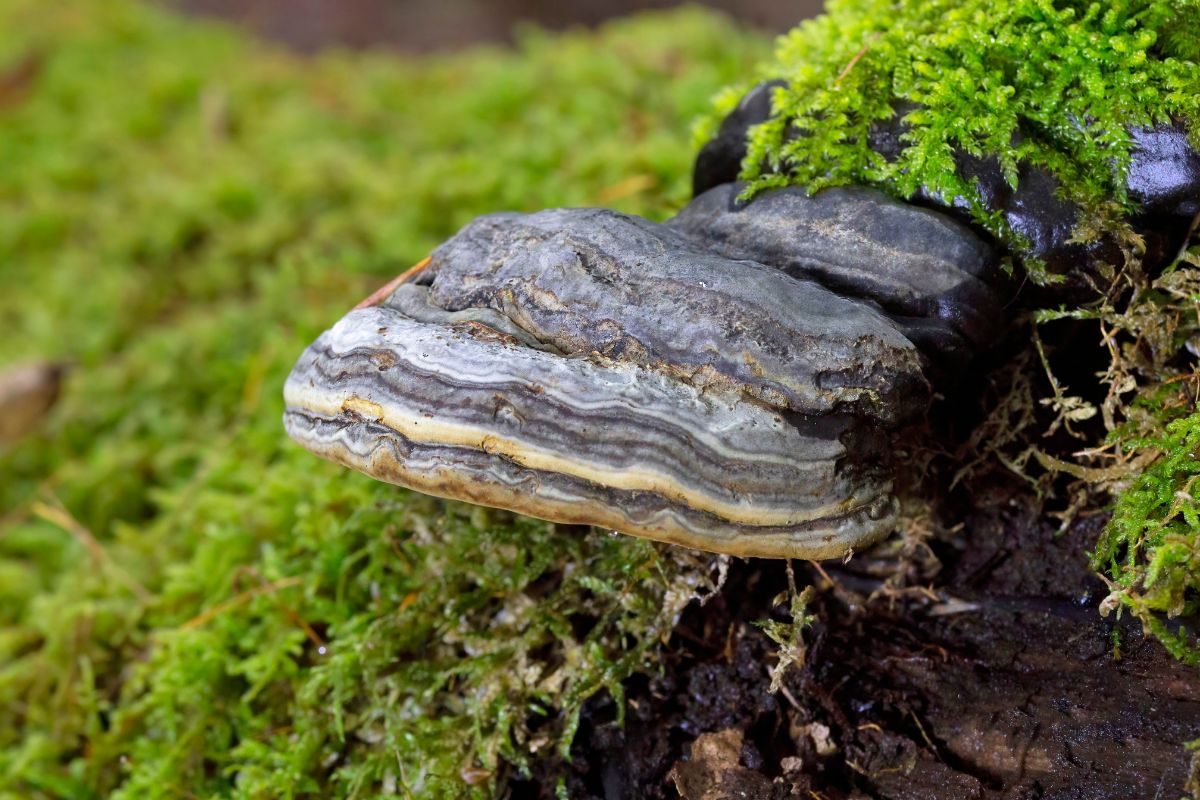
Jump to:
The Historical Significance of the Tinder Fungus
The scientific name, derived from Latin, carries a significant meaning. “Fomes” translates to “tinder,” while “fomentarius” refers to “used for tinder.” The tinder polypore is also known by various common names, including Tinder Conk, Amadou, Hoof Fungus, and Iceman Fungus.
The history of the tinder fungus is deeply intertwined with human civilization, dating back to the era of our hunter-gatherer ancestors. Despite being inedible, F. fomentarius has traditionally been used as the key ingredient of amadou, a material primarily used as tinder for starting a fire.
The mushroom was discovered among the possessions of the Tyrolean Iceman, the 5,000-year-old body of a man who was preserved in the Swiss Alps. It’s believed that the Iceman used the tinder fungus for fire-starting purposes — it had to be very important for him to carry it among his few possessions.
The other fungus Otzi, the Iceman, carried in his possessions was birch polypore, known for its medicinal properties. Learn more about Birch polypore foraging and medicinal uses here.
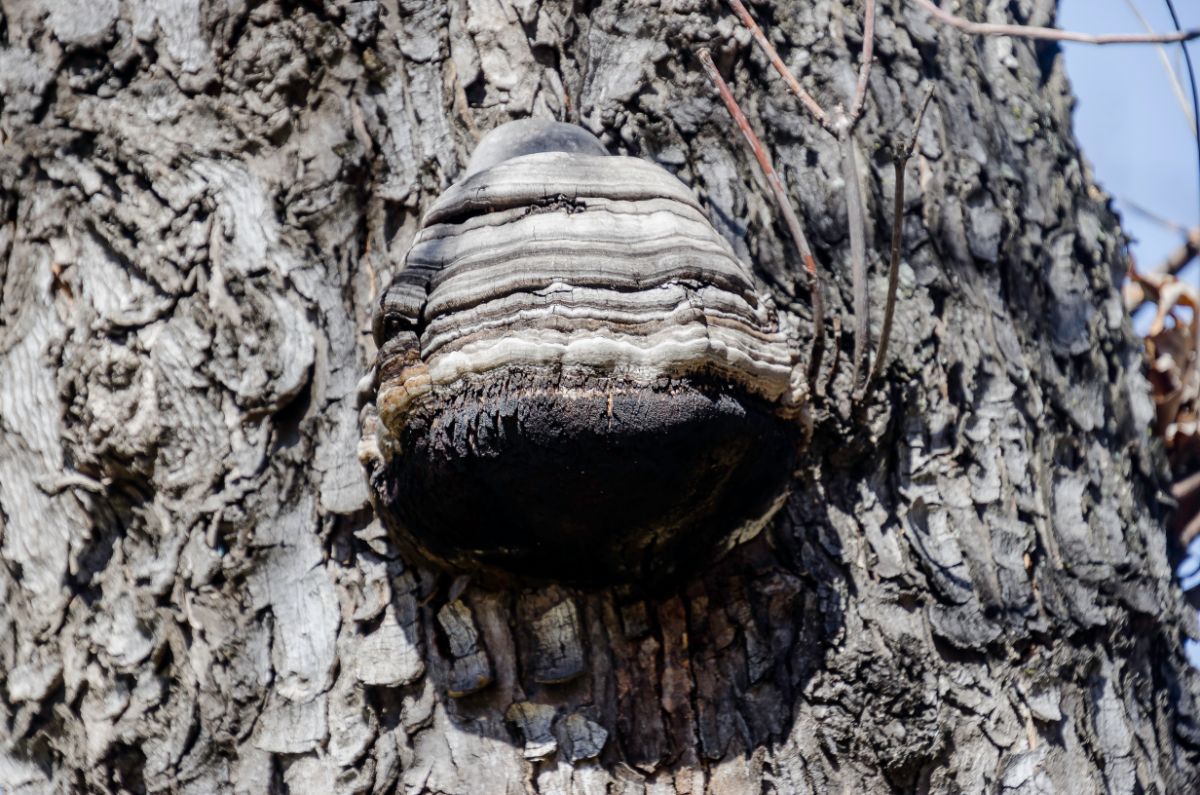
Beyond its utility as tinder, amadou was also used to create clothing and other items. Artisans in Romania, Bohemia, and Hungary create hats using fungus. The process involves soaking the interior tissues of the mushroom in lye, mashing them into a flat layer, and molding and drying them. The resulting hat, made from the Tinder Polypore’s spongy fiber, resembles leather and showcases the unique creativity and resourcefulness of these cultures.
This mushroom was also used in Germany and Austria in ritual smoking ceremonies. It was also used this way by the Khanty people in West Siberia. The mushrooms were burned to drive off evil spirits and as a means to prevent any influence of the deceased on the living during burials.
There is also a history of the tinder polypore being used as a styptic, a substance capable of stopping bleeding from a wound. This practice was utilized by older European tribes as well as North American Indigenous peoples.
Other documented uses of Fomes fomentarius:
- In Siberia, used as snuff, alone or mixed with tobacco
- As pincushion material, to keep pins from rusting
- As a mounting material for entomologist’s insect collections
- Treating stomach, uterus, and esophageal cancers in China
- To treat nervous disorders and as a laxative in Ayurvedic traditional medicine
Learn how to make amadou from tinder fungus in this article or from this video. This article has a “quick & easy” method for a tinder fungus fire starter.

Tinder Polypore Identification
Season
Year-round, perennial
Habitat
Fomes fomentarius has a wide circumboreal distribution; it is found in both northern and southern Africa, throughout Asia, into eastern North America, and throughout Europe. The species typically grows alone, but multiple fruit bodies are often found upon the same host trunk.
The tinder fungus mainly grows on hardwoods. It is most common in northern areas on birch, while in the south, beech is more typical. Oak trees are the typical host in the Mediterranean. The species has also been known to grow upon maple, cherry, hickory, lime tree, poplar, willow, alder, hornbeam, sycamore, and even, exceptionally, softwoods, such as conifers.
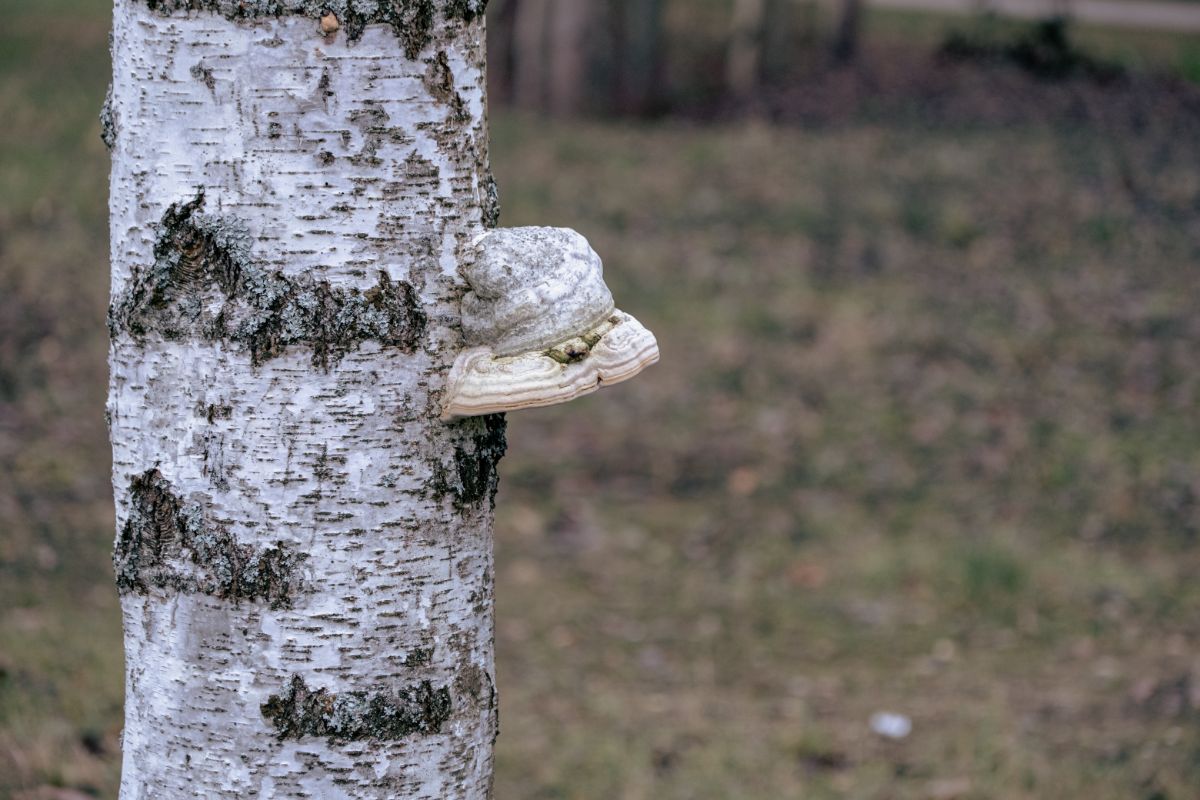
Identification
Cap
The cap of Fomes fomentarius is hoof-shaped, reaching up to 17 inches in width, though more often it is between 4-8 inches wide. Its upper surface is characterized by a pale dark gray to dark brown color. The cap is concentrically furrowed, creating distinct upraised zones. Often, the zones are differently colored, though it just may be 5-6 shades of gray or brown.
The fungus is hard and woody, with a blunt edge extending beyond the pore surface. While it typically takes on a horse’s hoof shape, it can also be more bracket-like with an umbonate attachment to the substrate. The upper surface of the fungus is tough, bumpy, hard, and woody.
The outer cap is like a hard shell, 1/4-1/2 inch thick, surrounding the hard, brown fibrous flesh inside. The color and size of the tinder fungus’ fruiting body varies based on where the specimen has grown. Historically, the darkest fruit bodies were classified as Fomes nigricans, but this is now recognized as a synonym of Fomes fomentarius.
Pores
The pore surface of the Tinder Polypore starts off cream-colored, gradually turning brownish as it matures. There is a small ridge where the pore surface meets the edge of the mushroom, which is more visible when viewed from below.
Stem
Unlike many mushrooms, Fomes fomentarius lacks a distinct stem. Instead, it grows directly on wood, attaching itself firmly to the substrate.
Flesh
The flesh of the mushroom is cinnamon brownish, thin, and fibrous. With age, it hardens to very tough and is difficult to break up.
Odor
The Tinder Polypore has a faintly fruity odor.
Spore Print
Pale lemon
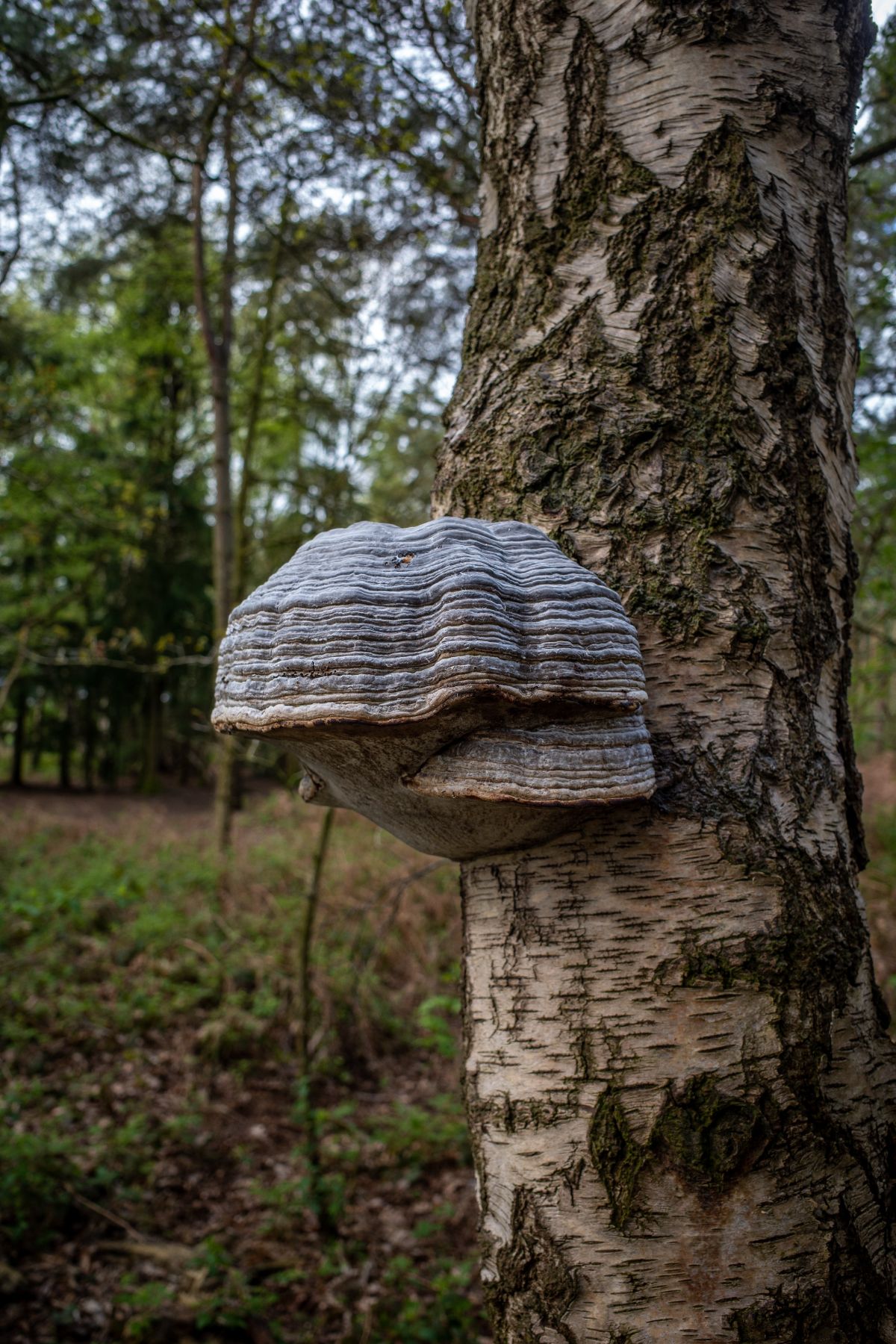
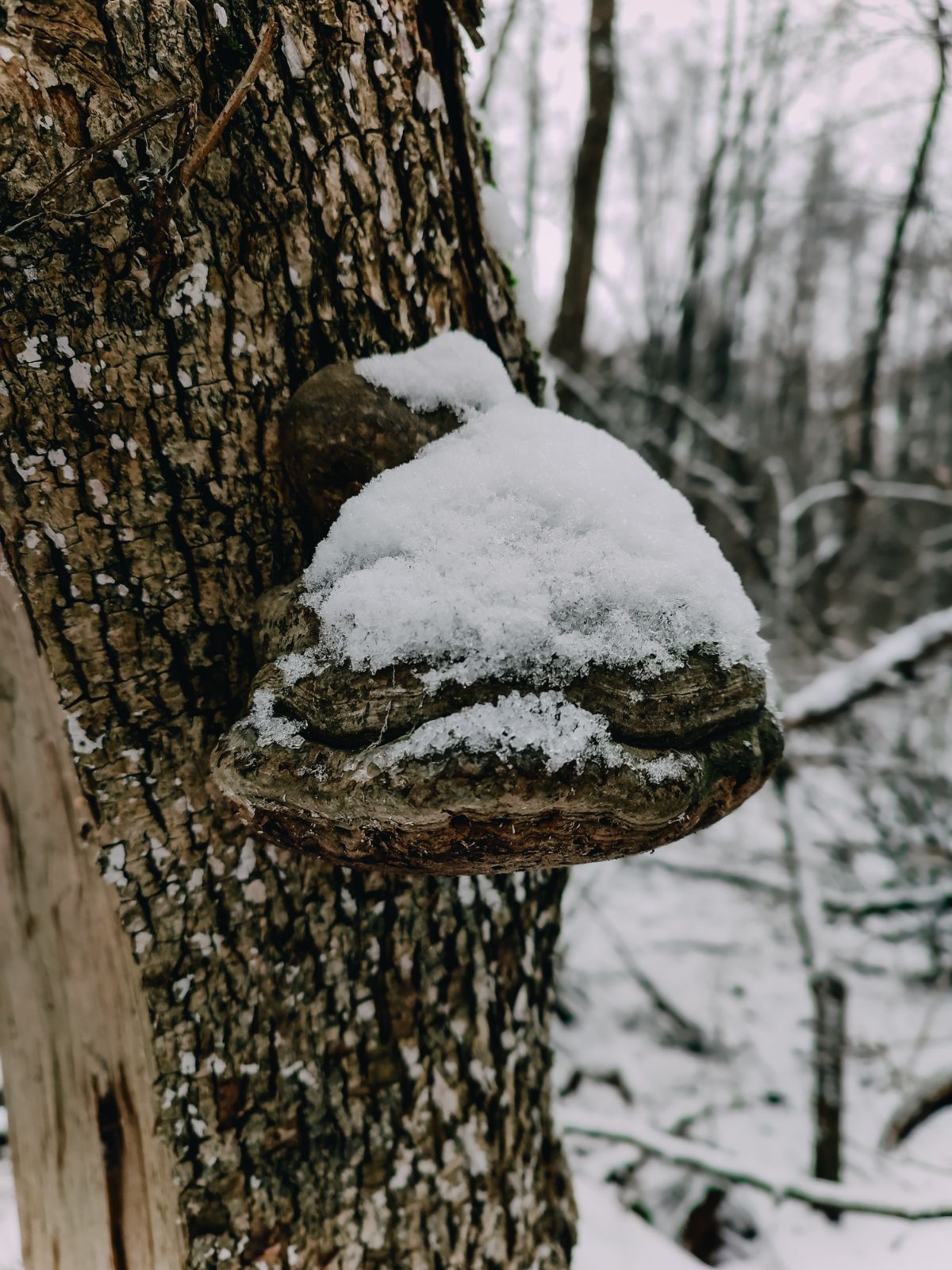
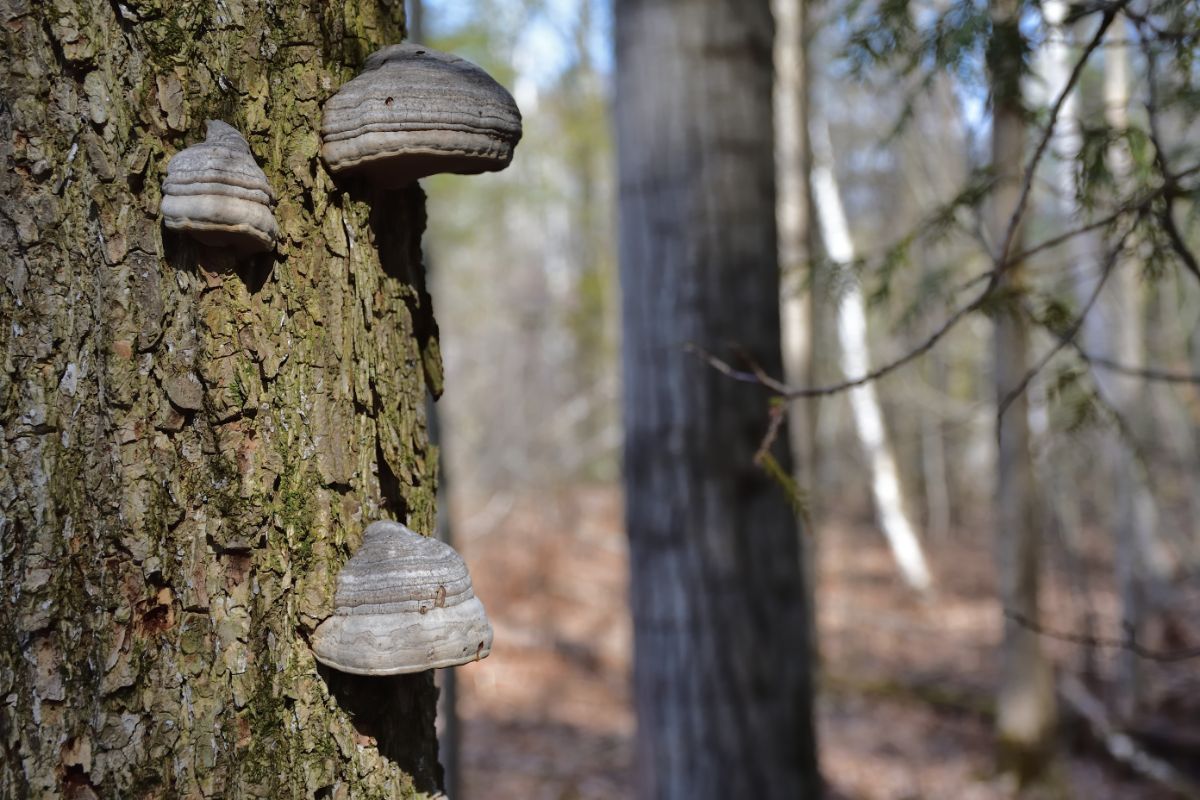
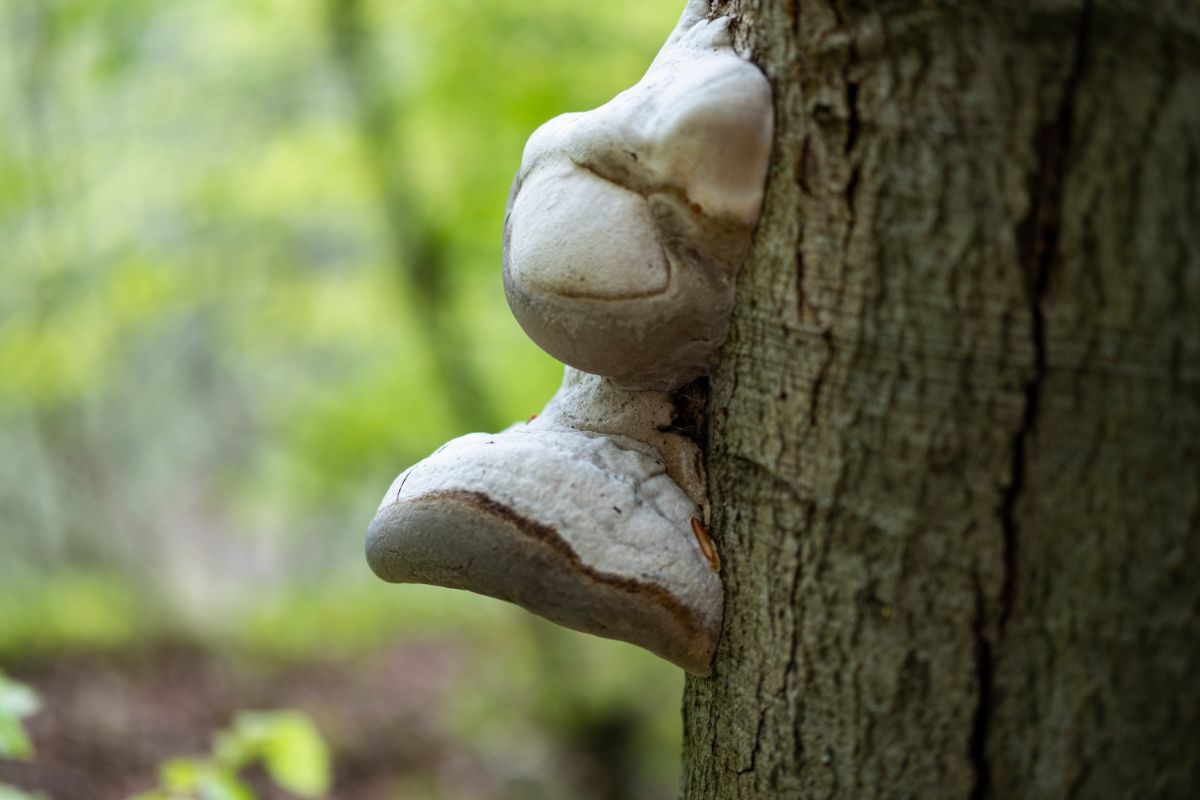
Tinder Polypore Lookalikes
There are a few similar species that can be confused with the tinder fungus. Here’s a brief guide to differentiate between them:
Birch Polypore (Fomitopsis betulina)
The birch polypore also grows as a hoof-shaped fungus, but it lacks banding in color and texture on the surface and is generally brown in color.
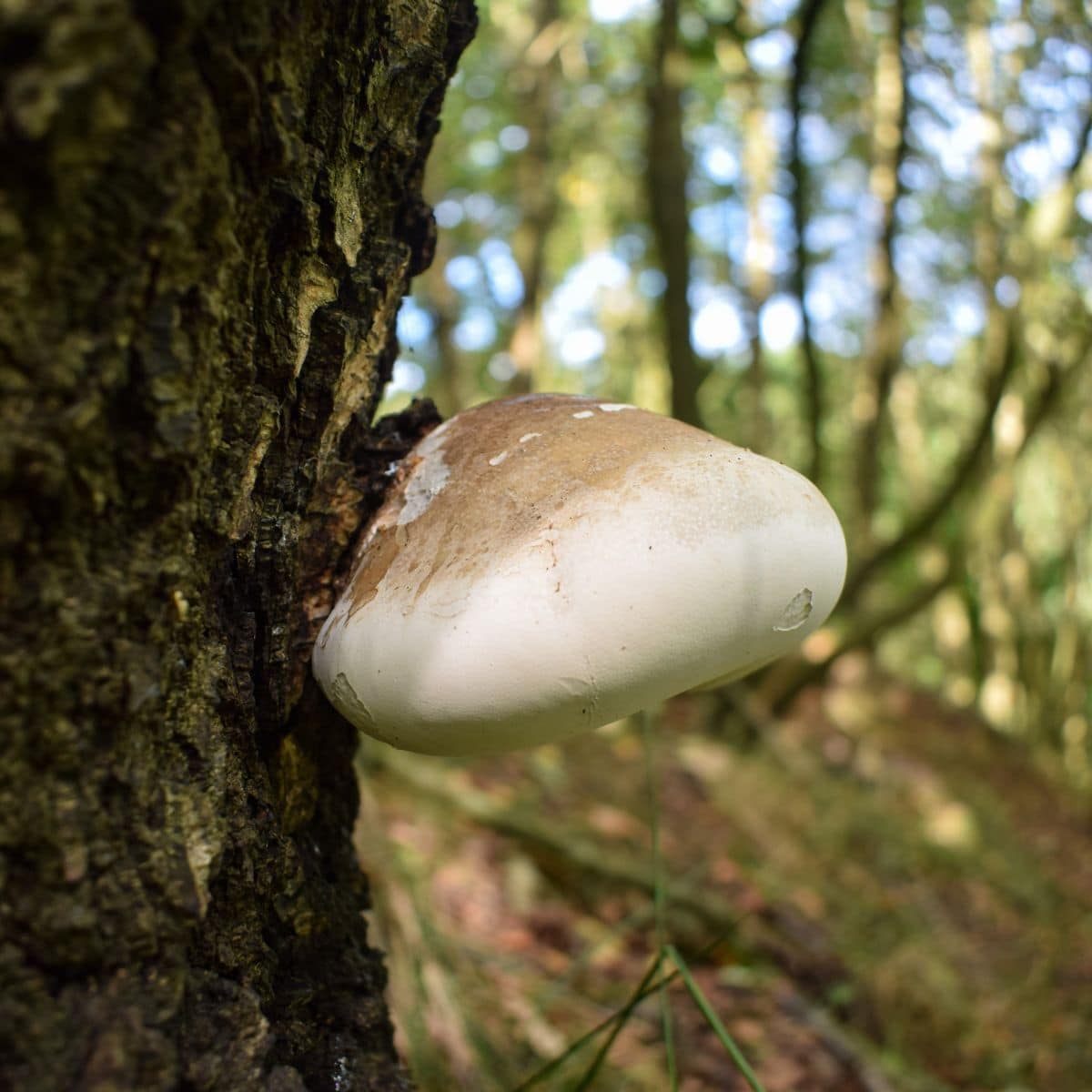
Willow Bracket (Phellinus igniarius)
This species has a similar shape but is usually darker in color with a charred appearance. The surface also develops vertical plate-like cracks, giving it the appearance of a horse-hoof-shaped lump of charcoal.
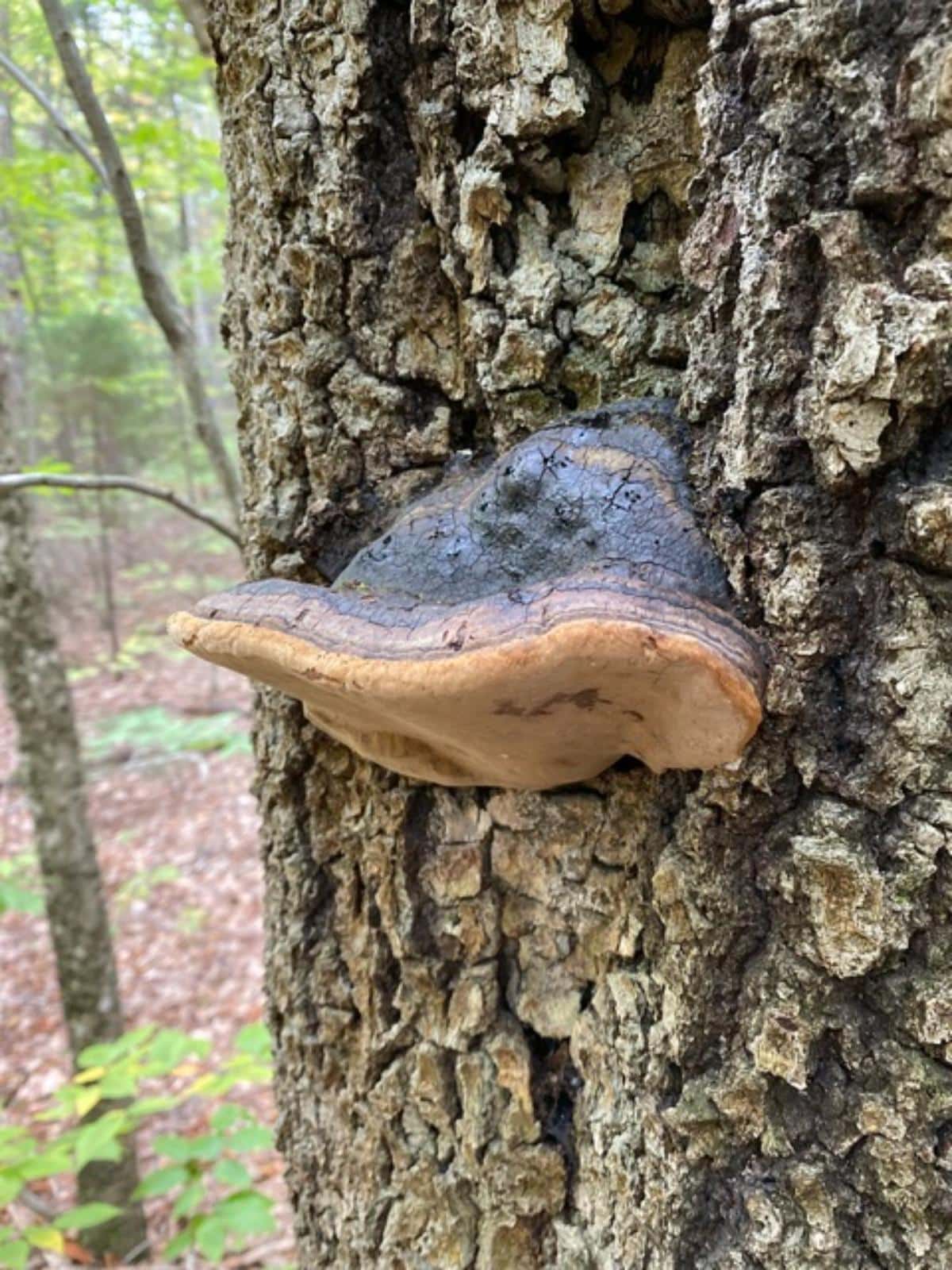
Artist’s Conk (Ganoderma applanatum)
The artist’s conk is also a polypore but is flatter and wider. The white pore surface on this species instantly bruises brown when handled. This is what makes it such an interesting tool for artists who use the mushrooms to create art.
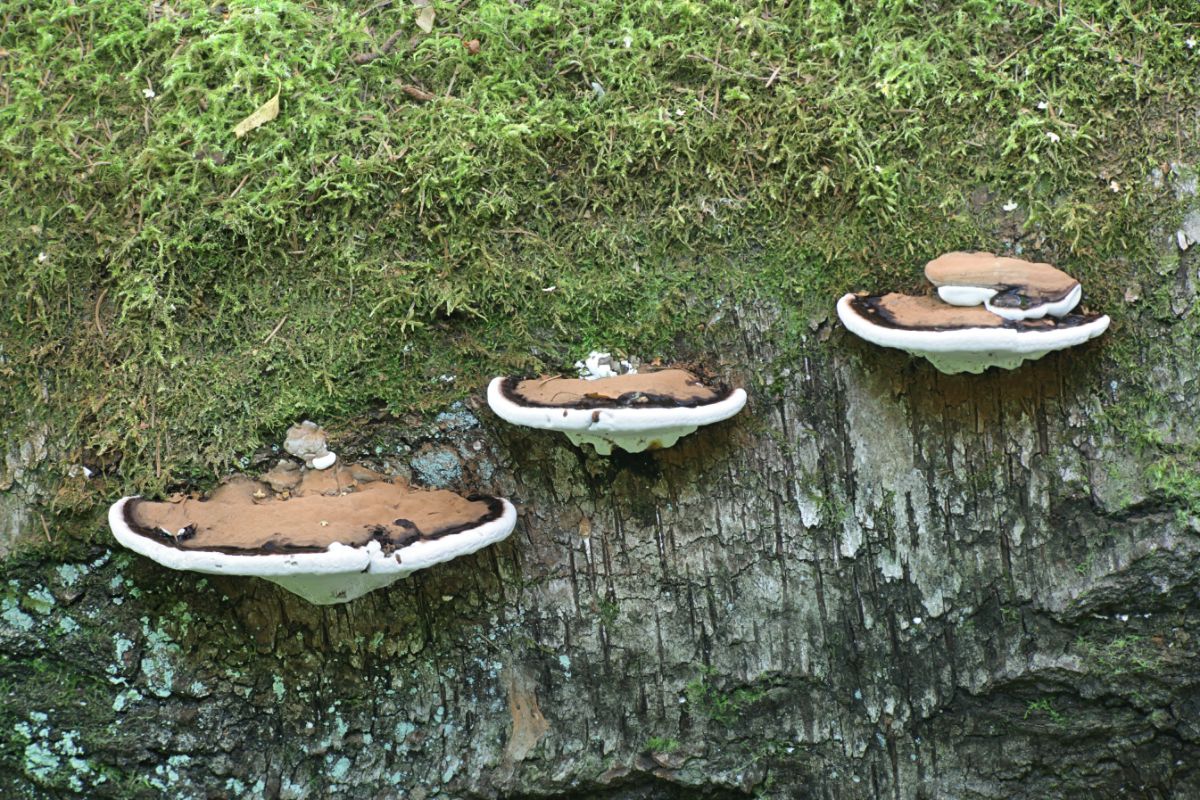
Understanding the Ecology of the Tinder Fungus
The tinder fungus is a stem decay plant pathogen. The mycelium of the tinder fungus penetrates tree wood through damaged bark or broken branches, causing the tree to rot. It can grow directly onto the bark of older or dead trees.
The tinder fungus is able to survive for a time, quickening the tree’s decomposition and then becoming a saprotrophic feeder. It typically lives there for years until the log is completely destroyed.
The fruit bodies of the tinder fungus are perennial, living on a tree for up to thirty years. The fungus grows the most between early summer and autumn. The yearly growth always occurs on the bottom of the tinder polypore, meaning that the lowest layer is the youngest.
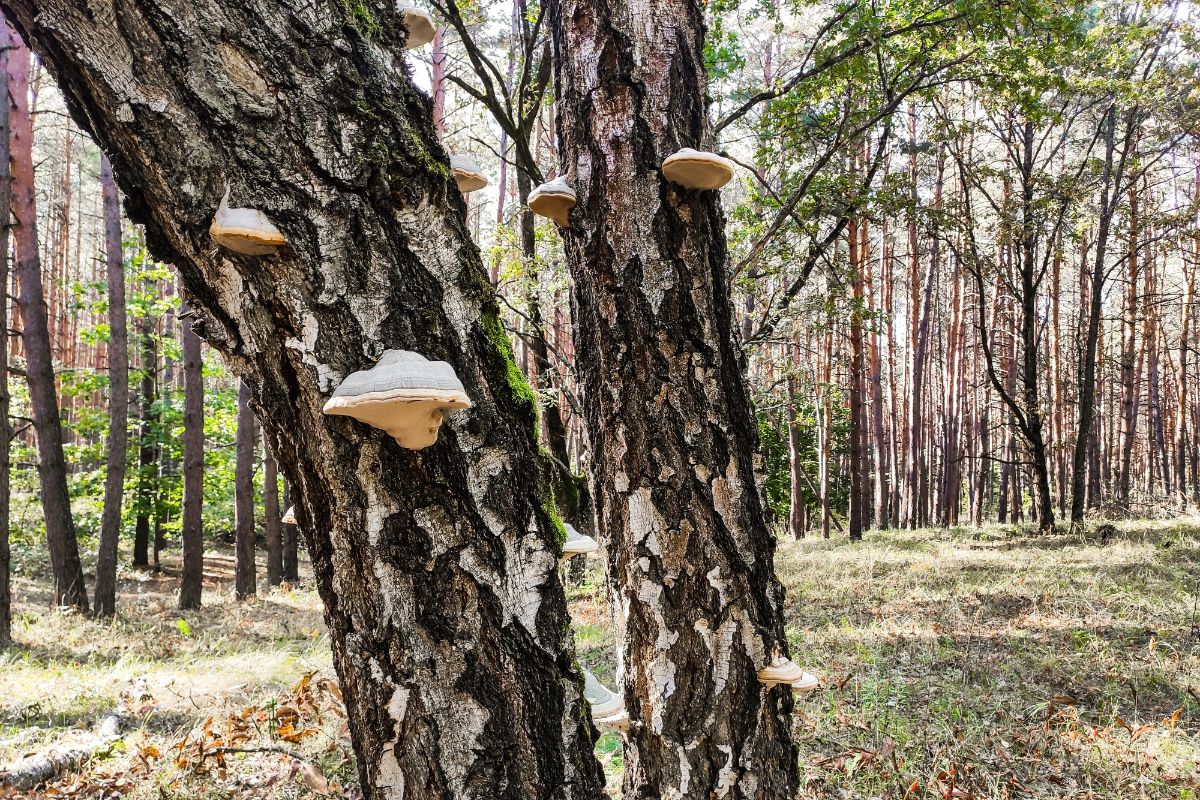
Uses and Importance of the Tinder Fungus
The species is not considered edible. The flesh is acrid tasting with a slightly fruity smell.
However, the tinder fungus has economic significance, and not always in a good way. It depreciates timber value as it spreads its parasitic infection, breaking down trees. While we can see the obviously infected damaged trees with the fruiting bodies, the tinder fungus is also an endophyte, which means it may already be in healthy trees and can’t be seen yet. This is a big problem for lumber harvesters.
The tinder polypore also can be used to produce clothing and tinder, and there is potential for use as a leather substitute.
Amadou: A Material Derived from the Tinder Fungus
This species, as well as others, can be used to make amadou. Amadou is a material used as a tinder, among other things. It is produced from the flesh of the tinder fungus’ fruiting bodies. The fruiting bodies are first soaked in water, then cut into strips and beaten and stretched, separating the fibers. This material is referred to as “red amadou.”
The addition of gunpowder or niter produces an even more potent tinder. The tough substance has been used to produce clothing, including caps, gloves, and pants. In Europe, particularly Bohemia and Romania, other items of clothing, as well as picture frames and ornaments, have been made from the fungus. The end result is a soft, pliable material that has the feel of nice suede or leather.
And a fascinating story from 2022 about the last Amadou makers in Transylvania, Romania.

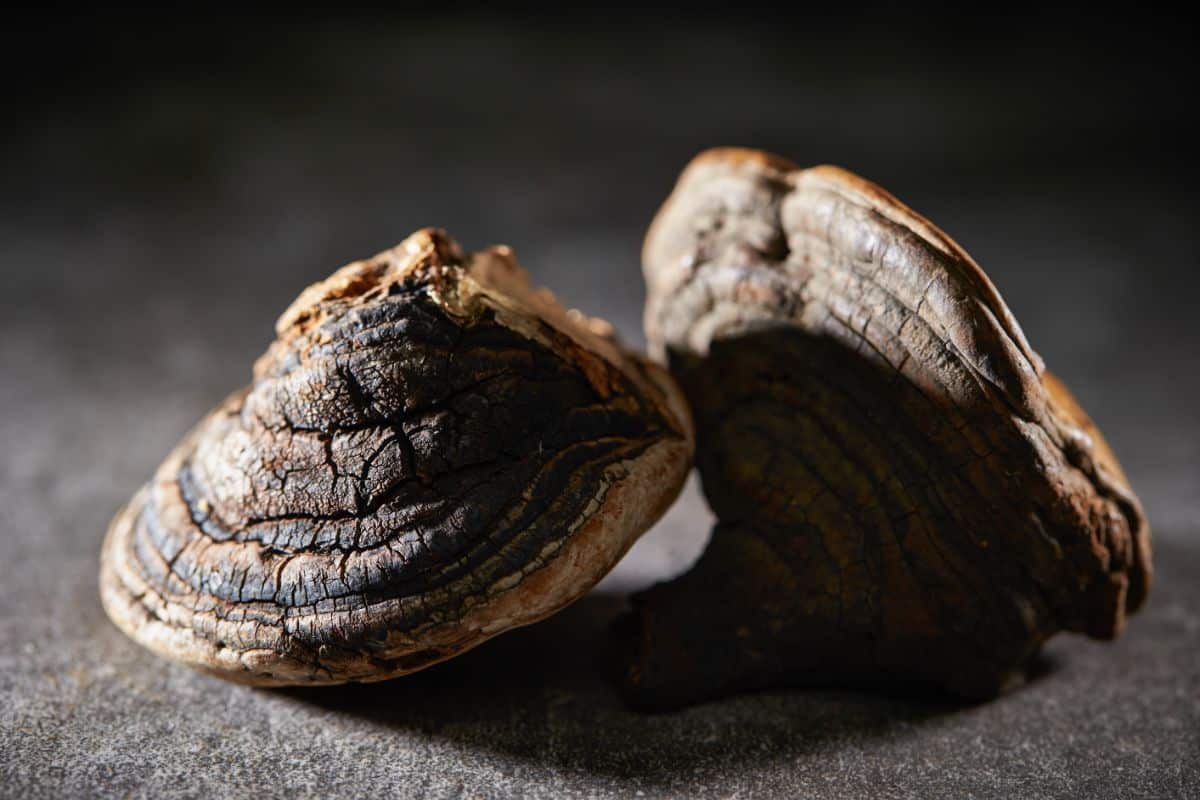
.
Common Questions About Tinder Fungus
Is tinder fungus poisonous?
No, but it isn’t exactly edible either since it is hard and woody.
Is hoof fungus medicinal?
Although the hoof fungus is not among the common or popular medicinal mushrooms, it has been used traditionally to dress wounds, stop bleeding, treat various cancers, and as a diuretic, laxative, and nerve tonic. The hoof fungus is currently being studied for its ability to reduce pain, boost the immune system, assist in diabetes treatment, and for its anti-microbial properties. However, more research still needs to be done.

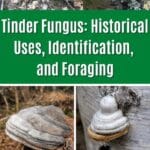
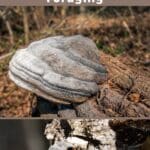



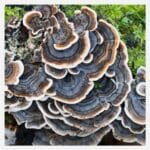

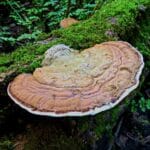
Leave a Reply